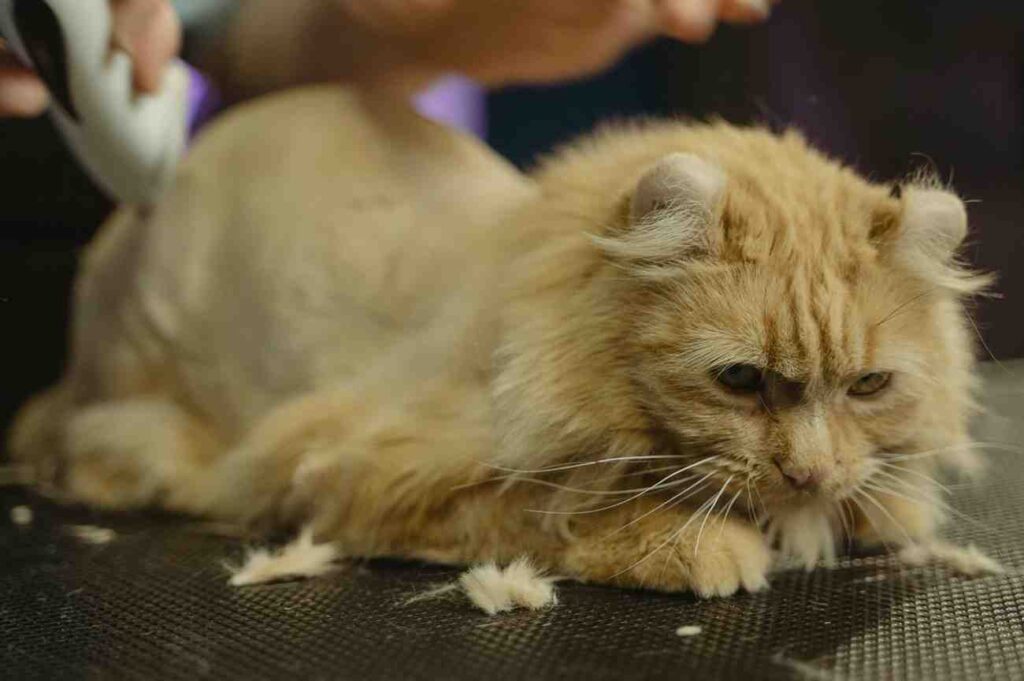Your cart is currently empty!
Category: Health Insurance

Essential Insurance for Your Pet Care Business
Running a pet care business is a rewarding experience, but like any other venture, it comes with its share of risks. Whether you’re offering pet grooming, boarding, dog walking, or other services, ensuring you have the right insurance coverage is crucial. Many pet care business owners may not realize the importance of business insurance or understand the variety of coverages available to protect their operations.

In this guide, we’ll explore the key insurance coverages you need for your pet care business, how they can protect you from common risks, and provide recommendations on where to get the right insurance plan.
Section Title Description Introduction Why business insurance is important for pet care. Types of Insurance General liability, professional liability, property, and workers’ compensation. Why You Need Insurance Real-life scenarios showing insurance protection. Choosing Insurance Tips on finding the right plan with the help of an agent. Why Your Pet Care Business Needs Insurance
Insurance serves as a safety net for your business, protecting you from unexpected incidents that could result in financial loss. In a pet care business, you’re not only responsible for the pets in your care but also for the safety of your clients and their property. Even if you take every precaution, accidents happen, and you want to be prepared for them.
The most essential coverage for a pet care business is Commercial General Liability Insurance (CGL). It protects your business from various types of claims that may arise, including bodily injury, property damage, and even legal defense costs. Below, we’ll break down four key components of a CGL policy and explain how they can benefit your business.
Third-Party Bodily Injury Coverage
One of the most common types of claims covered under general liability insurance is third-party bodily injury. This comes into play when a client, customer, or visitor is injured on your business property or while you’re providing a service.
Example: Imagine a client is dropping off their dog for grooming, and they trip over a piece of equipment or slip on a wet floor. The client falls, injures their elbow, and is unable to work for several weeks. Because you have general liability insurance, you can file a claim to cover the client’s medical expenses and lost wages, ensuring that you’re not paying out of pocket.
This type of coverage protects your business from the financial strain that could result from someone getting injured while interacting with your business. Even a minor injury could lead to costly medical bills and potential lawsuits, making bodily injury coverage a must-have.
Third-Party Property Damage Coverage
In addition to bodily injuries, your business can also be held responsible for damage to someone else’s property. If you or your staff accidentally damage a client’s property or a third party’s belongings, property damage coverage in your CGL policy will step in to cover repair or replacement costs.
Example: Let’s say you’re out walking a client’s dog, and the dog knocks over a large, expensive planter in front of a coffee shop. The coffee shop owner demands compensation for the damage. With general liability insurance, you can file a claim to cover the cost of replacing or repairing the planter, so you don’t have to pay for the damages out of pocket.
Accidents can happen at any time, and property damage coverage ensures that these incidents don’t negatively impact your business’s financial health.
Legal Defense Coverage
No matter how carefully you run your pet care business, you could still face unfounded legal claims. Even when you know you’ve done nothing wrong, defending your business in court can be expensive. This is where the legal defense component of general liability insurance can be invaluable.
Example: You offer pet grooming services, and a client claims that your grooming caused their dog to lose a $10,000 grand prize at a regional dog show. The client demands compensation for the loss, even though you know you performed the grooming to industry standards. In this situation, you may need to hire a lawyer to defend yourself. General liability insurance can cover the costs of your legal defense, so you don’t have to worry about the financial burden of hiring attorneys or dealing with court fees.
Legal defense coverage is essential for protecting your business from claims, whether they are valid or not, allowing you to defend your reputation and keep your operations running smoothly.
Medical Payments Coverage
In some cases, a client or visitor may need immediate medical attention due to an accident that occurs on your property or while you’re providing services. Medical payments coverage is designed to cover the injured party’s medical expenses, regardless of who is at fault.
Example: Returning to the scenario of the client with the injured elbow, let’s say their injury requires surgery, and you’re responsible for covering their medical co-pay. With commercial general liability insurance, you can make a claim to cover these medical expenses, helping you avoid paying out of pocket for costly procedures.
Medical payments coverage offers a layer of protection that ensures your business can handle medical claims swiftly and efficiently, reducing the potential for further legal action.
Choosing the Right Insurance Plan for Your Pet Care Business
Now that you understand the key coverages included in a general liability policy, it’s important to find the right insurance provider to protect your business. Different pet care businesses have unique risks and requirements, so working with an experienced insurance agent or broker is crucial. They can help tailor a policy that fits the specific needs of your business, ensuring you have the right coverage in place.
When choosing an insurance provider, consider the following:
- Reputation and experience: Look for insurers that specialize in small businesses and have a solid reputation in the industry.
- Comprehensive coverage options: Ensure that your policy includes all the necessary coverages, from general liability to workers’ compensation if you have employees.
- Customer service: Good communication and fast response times are essential when dealing with claims or policy changes.
Additional Insurance Coverages to Consider
While general liability insurance covers many of the risks your pet care business may face, there are other types of coverage you should consider:
- Workers’ Compensation Insurance: If you have employees, this insurance is required in most states. It covers medical expenses and lost wages for employees who are injured while working.
- Professional Liability Insurance (Errors & Omissions): This covers claims related to mistakes or negligence in the services you provide. For example, if a client claims that your grooming services harmed their pet’s health, this coverage can help with legal defense and damages.
- Business Property Insurance: This protects the physical assets of your business, such as your facility, equipment, and supplies, in case of fire, theft, or natural disasters.
- Business Interruption Insurance: If an event like a fire or storm forces you to temporarily close your business, this insurance can help cover lost income and operating expenses during the downtime.
Conclusion
Running a pet care business comes with its own unique set of challenges and risks, but having the right insurance coverage in place can give you peace of mind. By understanding the importance of general liability insurance and its various coverages—such as bodily injury, property damage, legal defense, and medical payments—you can protect your business from unexpected financial hardships.
To ensure you have the best protection for your business, consult with an insurance professional who understands the pet care industry. They can guide you through the process of finding the right policy tailored to your specific needs. With the right coverage, you can focus on what you do best—caring for pets—while knowing that your business is safeguarded.

Does Insurance Cover Wisdom Teeth Removal?
Getting your wisdom teeth removed can be a significant expense, and one of the most common questions people ask is whether their insurance will cover the cost. The answer isn’t always straightforward, as coverage can depend on several factors including your type of insurance, the complexity of the extraction, and your specific plan. In this blog, we’ll break down what you need to know about insurance coverage for wisdom teeth removal.

What is Wisdom Teeth Removal?
Wisdom teeth, also known as third molars, are the last set of teeth to develop in your mouth, typically appearing in your late teens or early twenties. Many people need to have these teeth removed due to pain, overcrowding, or impaction, which occurs when the teeth don’t have enough space to emerge properly. The extraction can range from a simple procedure to a more complex surgery, depending on the position and condition of the teeth.
Insurance Type Coverage for Wisdom Teeth Removal Notes Dental Insurance Typically covers 50-80% if medically necessary Coverage varies by plan; deductible may apply Health Insurance May cover if deemed medically necessary (e.g., surgery) Usually applies for more complex procedures Medicare Rarely covers dental procedures, including wisdom teeth Only in specific emergency cases Medicaid Coverage varies by state, often for those under 21 Check state-specific coverage requirements Out-of-Pocket Costs $100 – $600 per tooth with insurance Without insurance: $200 – $1,000 per tooth Does Insurance Cover Wisdom Teeth Removal?
The short answer is that it depends on your insurance plan. Both dental and health insurance can potentially cover some or all of the cost of wisdom teeth removal. However, the specifics can vary widely.
Dental Insurance Coverage
Most dental insurance plans cover wisdom teeth removal if it is deemed medically necessary. This usually applies when the teeth are impacted, causing pain, or if there’s a risk of infection. Coverage can vary, but most plans cover a portion of the procedure, typically 50-80%, after you’ve met your deductible.
Also Read: Top Pet Insurance Companies of 2024 Revealed
Health Insurance Coverage
In some cases, health insurance may cover the cost of wisdom teeth removal, especially if the procedure is complex and involves oral surgery or hospitalization. This is more likely if your dentist or oral surgeon can demonstrate that the removal is essential for your overall health. For instance, if your wisdom teeth are causing sinus issues or other complications, health insurance might step in.
Medicare and Medicaid Coverage
Medicare usually doesn’t cover dental procedures, including wisdom teeth removal, unless it is part of a covered emergency procedure. Medicaid coverage for wisdom teeth removal varies by state, but it generally covers the procedure for those under 21 if it’s medically necessary.
Cost of Wisdom Teeth Removal with Insurance
The cost of wisdom teeth removal can vary depending on the complexity of the procedure and your location. With insurance, your out-of-pocket cost can range from $100 to $600 per tooth. Without insurance, this cost can increase to between $200 and $1,000 per tooth. Other factors, like the need for anesthesia, can also affect the final cost.
How to Check if Your Insurance Covers Wisdom Teeth Removal
To avoid unexpected expenses, it’s crucial to verify your insurance coverage before scheduling your wisdom teeth removal. Here’s how you can do it:
- Review Your Insurance Policy: Check your dental or health insurance policy documents for details about coverage for oral surgery or wisdom teeth removal.
- Contact Your Insurance Provider: Call your insurance company directly and ask if wisdom teeth removal is covered under your plan. Be sure to provide them with any necessary details about the procedure, including whether it is considered medically necessary.
- Get a Pre-Authorization: Many insurance plans require pre-authorization for surgical procedures. Ask your oral surgeon or dentist to submit a pre-authorization request to your insurance company. This will give you a clear picture of what is covered and what your out-of-pocket costs will be.
Tips for Reducing Out-of-Pocket Costs
If your insurance does not fully cover the cost of wisdom teeth removal, there are a few ways to reduce your out-of-pocket expenses:
- Use a Flexible Spending Account (FSA) or Health Savings Account (HSA): These accounts allow you to use pre-tax dollars to pay for eligible medical expenses, including dental procedures.
- Ask for Payment Plans: Many dental offices offer payment plans that allow you to spread the cost of the procedure over several months.
- Shop Around: Costs for wisdom teeth removal can vary significantly from one provider to another. Get quotes from multiple oral surgeons to find the best price.
Conclusion
Whether or not insurance covers wisdom teeth removal can be confusing, but with a little research and preparation, you can navigate the process more easily. Be sure to review your insurance policy, contact your provider, and get a pre-authorization to understand what your plan covers. With this information in hand, you can make an informed decision and avoid any surprise costs.
If you have any more questions about insurance coverage for wisdom teeth removal or want to explore your options, feel free to reach out to your dental provider or insurance company for personalized advice.

Top Pet Insurance Companies of 2024 Revealed
Pet insurance is a smart investment to protect yourself from unexpected veterinary expenses. Whether it’s a sudden illness or an unforeseen accident, having the right coverage can ease the financial burden of taking care of your furry friend.

This guide highlights the top pet insurance providers in 2024, comparing their plans, pricing, and features. We evaluated them on key factors such as coverage options, customer service, cost, and overall reputation. Read on to discover the best pet insurance companies that can help you keep your pet healthy without breaking the bank.
Lemonade: Best Overall Pet Insurance
Lemonade tops our list as the best overall pet insurance company, scoring 96 out of 100 for its comprehensive coverage, competitive pricing, and excellent customer service. Lemonade offers flexible plans that cater to various needs, from basic accident and illness coverage to comprehensive wellness care, making it an ideal choice for pet owners, whether you have a small cat or an active Golden Retriever.
Pros:
- Charitable giveback program.
- Short 48-hour waiting period for accidents.
- No age limits for coverage.
Cons:
- Does not cover behavioral treatments.
- Limited availability of veterinary care services in only 35 states.
Why We Chose Lemonade
Lemonade’s plans are affordably priced, making them accessible to many pet owners. Customers can select from various coverage limits, reimbursement rates, and deductible options. The company also offers an optional Wellness Plan for routine care and an affordable add-on for comprehensive vet fee coverage, which includes acupuncture and therapy.
One of Lemonade’s standout features is its user-friendly mobile app equipped with AI technology, simplifying the process of filing claims and managing policies. This technology enhances the overall user experience, making it easy for pet owners to handle their insurance needs without hassle.

Plans and Pricing
Lemonade offers a primary accident and illness plan, with additional options for preventive care, vet visit fees, and physical therapy. Exclusions include pre-existing conditions, behavioral treatments, elective cosmetic procedures, and dental care. Based on our research, monthly premiums range from $15 to $30 for dogs and $9 to $15 for cats.
Also Read: 6 Great Advice To New Insurance Agents
Spot: Most Customizable Plans
Spot is recognized for providing the most customizable plans, scoring 91 out of 100. It offers a wide range of coverage options, including accident-only and comprehensive accident and illness plans, making it a great choice for pet owners who want flexibility in their insurance coverage.
Pros:
- Standard plans include microchipping.
- Offers a 10% discount for multiple pets.
- Unlimited coverage options available.
Cons:
- Does not cover pets under eight weeks old.
- Long 14-day waiting period for accidents.
Why We Chose Spot
Spot stands out for its extensive customization options. Customers can choose from seven annual coverage limits ranging from $2,500 to unlimited, three reimbursement levels, and five annual deductibles. This flexibility allows pet owners to tailor their plans to meet their specific needs and budget. Additionally, Spot offers one of the lowest-priced accident-only plans, ideal for those looking for basic coverage.
Plans and Pricing
Spot offers two primary plans: accident-only and accident and illness coverage. Both include exam and vet visit fees. Spot also offers two preventive care options, Gold and Platinum, at flat rates for routine care. Exclusions include pre-existing conditions, cosmetic procedures, and breeding costs. Monthly premiums are between $15 and $25 for dogs and $10 to $15 for cats.
Embrace: Best for Deductibles
Embrace is our top pick for the best deductible options, scoring 93.5 out of 100. It provides flexible and affordable coverage options, making it a great choice for pet owners looking to manage their costs effectively.

Pros:
- Online chat for customer service.
- Covers exam fees.
- Easy policy management through a mobile app.
Cons:
- Highest annual coverage limit is $30,000.
- Limited customer service hours.
Why We Chose Embrace
Embrace offers various ways to lower your premium, including five deductible options and a Healthy Pet Deductible benefit. This unique feature reduces your deductible by $50 each year you don’t file a claim, rewarding responsible pet owners.
Embrace’s user-friendly online platform and mobile app make it easy to manage your policy, file claims, and access customer support. However, the highest annual coverage limit is $30,000, which might be limiting for pet owners seeking higher coverage.
Plans and Pricing
Embrace offers a single accident and illness plan with optional add-ons for Wellness Rewards, covering routine care like vet exams and vaccinations. Exclusions include pre-existing conditions and elective procedures. Monthly premiums range from $25 to $55 for dogs and $20 to $30 for cats.
Choosing the Right Pet Insurance: Key Factors to Consider
When choosing pet insurance, it’s essential to consider factors such as coverage options, exclusions, deductibles, and overall cost. Here’s a breakdown of what to look for when selecting the best plan for your pet:
Coverage Options
Most pet insurance plans cover accidents and illnesses, but the level of coverage can vary widely. Look for plans that cover a wide range of conditions, including chronic illnesses, hereditary conditions, and alternative therapies like acupuncture or physical therapy.
Exclusions
All pet insurance plans have exclusions, which are conditions or treatments not covered by the policy. Common exclusions include pre-existing conditions, cosmetic procedures, and breeding costs. It’s crucial to read the fine print and understand what’s not covered before choosing a plan.
Deductibles and Reimbursement Rates
Deductibles are the amount you pay out-of-pocket before the insurance coverage kicks in. Choose a deductible that aligns with your budget. Higher deductibles usually mean lower monthly premiums but more out-of-pocket costs when you make a claim. Reimbursement rates indicate how much the insurer will pay after you’ve met the deductible, typically ranging from 70% to 90%.
Cost and Value
The cost of pet insurance varies depending on factors like your pet’s age, breed, and location. Monthly premiums can range from $10 to $100 or more. It’s essential to balance cost and coverage to find a plan that offers the best value for your needs.
Final Thoughts
Pet insurance can provide peace of mind and financial security when your pet needs medical attention. Lemonade, Spot, and Embrace each offer unique benefits, making them the top choices for different needs and preferences. Whether you’re looking for comprehensive coverage, customization options, or affordable deductibles, one of these providers is sure to meet your requirements.
Before making a decision, compare quotes and read the policy details carefully to ensure you choose the best insurance plan for your furry friend. Investing in pet insurance is a proactive step toward ensuring your pet’s health and well-being without the worry of unexpected expenses.
For more detailed reviews and information on other pet insurance providers, stay tuned and explore our in-depth guides and resources. Don’t forget to like, comment, and subscribe for more updates on pet care and insurance.

